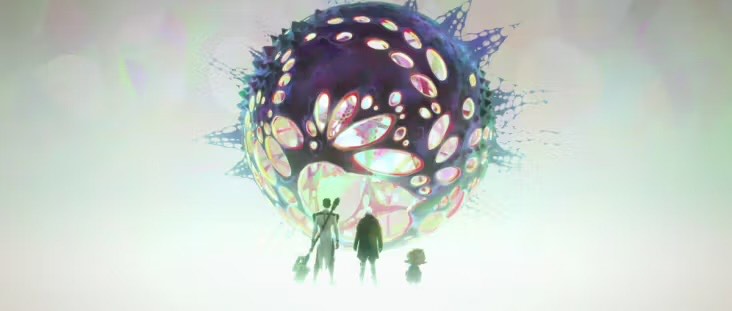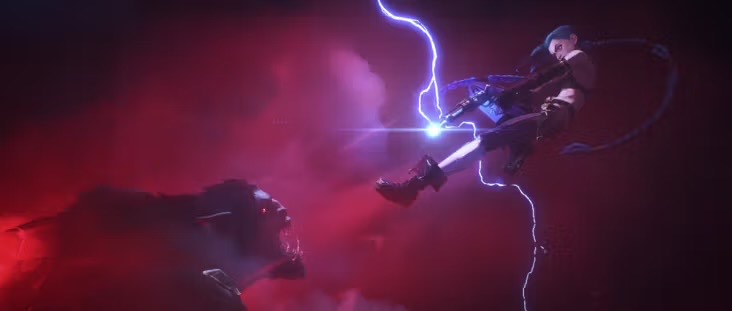Arcane’s final season cements the series in a league of its own

After a three-year wait, Arcane fans can finally dive into the second and final season of the acclaimed action-fantasy animated series now streaming in its entirety on Netflix. Developed by Riot Games and the French animation studio Fortiche, the series is based on the PC game League of Legends, released in 2009, the nine episode season split into three acts wastes no time in picking up directly from the devastating cliffhanger of season one.
The series follows two sisters, Vi (voiced by Haliee Steinfield) and Jinx (voiced by Ella Purnell), whose lives take opposite turns after witnessing the tragic death of their surrogate father Vander. Season one sets the stage as they split paths, eventually becoming rivals in the ongoing clash between the sister cities of Piltover and Zaun.
Although the conflict between the sisters is the heart of one of the central plot points in both seasons, season two also develops other leading characters and their personal conflicts. Characters introduced in season one such as Caitlyn, Mel, Ekko, Viktor, and Jayce take on bigger roles and have their own plotlines, while the newly introduced war general, Ambessa, is set up as one of the main antagonists.
While season one focused on introducing the characters and world building, mainly the conflict between utopian Piltover and the oppressed undercity Zaun, season two jumps straight into the action, picking up directly after Jinx’s attack on the Council and revealing both the survivors and the dead.
Act one mainly serves to increase tension between Piltover and Zaun, which reaches a breaking point at the end of Act one, with military intervention into Zaun’s bubbling rebellion. Act two reunites characters, developing the complicated relationship between the two sisters, while Act three ties all the characters into the final battle and concludes the stories of our protagonists.
Animated shows and movies are often taken less seriously and overlooked compared to live-action media, as they are commonly perceived as being exclusively for children. While much of animated media is aimed at younger audiences, series like Arcane challenge the misconceptions that animation cannot be as serious or compelling as live-action storytelling. The complex and mature themes explored in Arcane–such as death, war, betrayal, and oppression–shape the plot and characters in ways that make them feel real and relatable. These themes also raise profound, thought provoking questions that resist clichéd answers.
A refreshing aspect of Arcane is its ability to blur the lines between the lines of good and evil, skillfully developing its characters’ stories through their personal experiences of hardship, loss and tragedy.
For example, while Jinx is seen as a villain to those in Piltover, she is more a character of tragedy and trauma than of pure evil. All of the main characters at some point in the show have made questionable decisions, but the show excels in showing the events leading up to why they acted a certain way. While it may not always fully justify their actions, it does raise sympathy and understanding of the characters’ pain and tragedy that led them to the path they are on now.
The show has set the record for the most expensive animated show ever, with 18 episodes over two seasons totaling $250 million, which averages to $13.8 million an episode. The animation quality is reflected as each frame, whether an emotional, heart wrenching scene, or an epic battle between characters, is done to perfection, beautifully transitioning between multiple characters and locations.
There’s even a hand drawn charcoal scene depicting a rather sorrowful moment, further reflecting the passion and detail of the animators. Animated series in general also tend to have more detail in each shot as every frame is carefully crafted by the animators, so every little detail is thought out and intentional.
Another continuation from season one is the inclusive soundtrack, as season two features 22 songs from both popular artists like Linkin Park and Stray Kids, to lesser known songs such as the French song Ma Meilleure Ennemie by Stromae and Pomme. Instead of using common or already released songs that many shows and series tend to do, music artists created songs specifically for Arcane that fit the mood and events occurring in the scenes. Artists even reached out to the creators of Arcane to make music for the show after the success of the first season.
Many songs in Arcane enhance the tone of episodes, either through opening montages or high-stakes scenes that amplify emotional impact. For instance, “Ma Meilleure Ennemie” (“My Best Enemy”) plays during a bittersweet moment between two protagonists, perfectly capturing their complex dynamic.
With all the individual plot points and the need to connect them all together, the show picks up the pace significantly from season one, which can be overwhelming at times. The fast paced progression of each episode leaves less room to develop individual character storylines in season two and see more character interactions than season one developed.
While parts of season two may feel rushed at times, especially during the final battle in Act three, rewatching it could help connect all of the plotlines and reveal details missed the first time around. Overall, Arcane is one of the best animated shows I’ve watched, due to the intriguing storylines, well written and complex characters, stellar animation and the intricate soundtrack.
Your donation will support the student journalists of Buena High School. Your contribution will allow us to purchase equipment and cover our annual website hosting costs.













